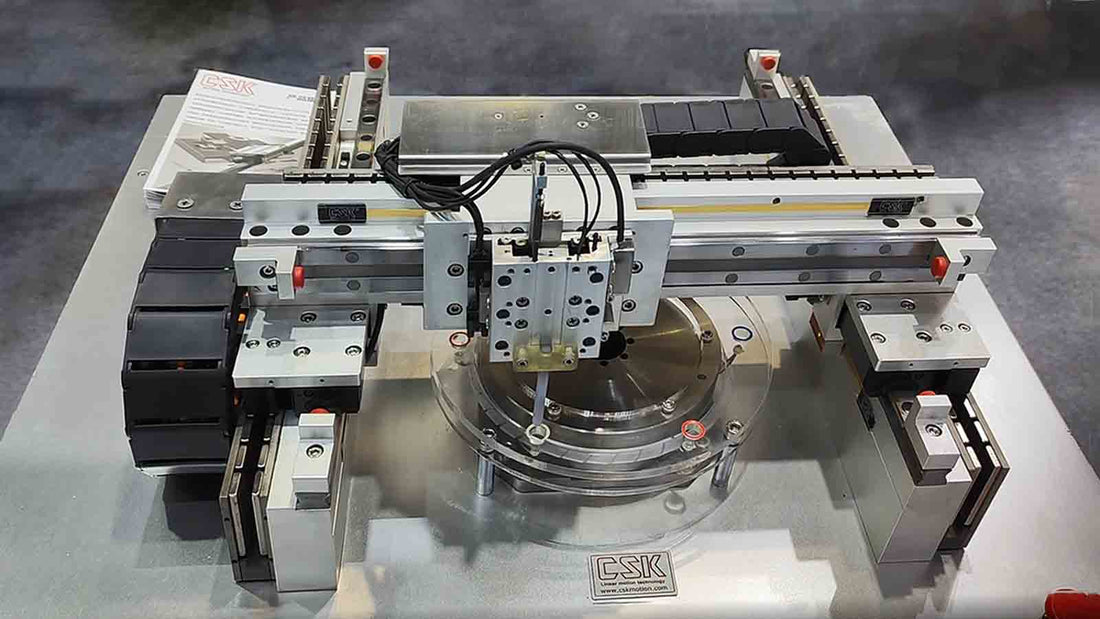The demands of high-speed machining are changing the manufacturing landscape. It requires tools to run faster, with higher precision and less downtime. As technology develops, the demand for more advanced motion systems in these high-performance environments is growing.
1.Requirements for Feed Systems in Modern High-SpeedMachining
In modern high-speed machining, the feed system is critical. It must provide precision at very high speeds, handle rapid changes in direction, and maintain these capabilities for long periods without noticeable wear. The goal is to cut cycle time while improving production quality and efficiency.
2.Why Linear Motors Are a Promising Solution for Fast Feed Systems
Linear motors have emerged as the most promising solution to meet these stringent requirements. Unlike traditional systems that rely on mechanical components such as ball screws or belts, linear motors offer direct drive capabilities. This direct approach reduces the number of parts that can wear out or fail. It also improves reliability and precision.
3.Key Benefits of Linear Motor Feed Drives
3.1. Precision and Accuracy
Linear motors excel in providing extremely precise motion. They convert electrical energy directly into motion, minimizing mechanical losses and errors typically caused by component wear.
3.2. Speed and dynamics
The ability of linear motors to speed up and decelerate quickly is a significant advantage in reducing cycle times. These motors do not have the inertia of heavy mechanical parts and can adjust speed and position quickly and accurately.
3.3. Reduced maintenance
Compared with traditional systems, linear motors have fewer moving parts. This makes it need less maintenance. This not only reduces downtime but also reduces long-term operating costs. Overall, it has more economic advantages.
Linear motors provide unparalleled speed, precision and reliability. It redefines the parameters of high-speed machining. Their integration with machine tools marks a major leap in manufacturing technology and breaks through the limits of automated production.
4.Advances in Linear Motor Technology and Drive Control
Technology Improvements: Recent developments in linear motor technology include improvements in magnet materials and coil design. This improves the efficiency and power density of these motors. The use of rare earth magnets, such as neodymium, improves force output and thermal performance. This enables linear motors to operate at higher speeds without overheating.
Advances in Drive Control: Drive control technology has also made great progress. Modern controllers now have more sophisticated algorithms. It can finely adjust the motor's response to dynamic load changes and vibrations. This precision is critical for applications that need extremely fine motion. These controllers can also integrate more seamlessly with digital manufacturing systems, supporting Industry 4.0 initiatives.
5.Historical Development of Machine Tools with Linear Motors
The integration of linear motors into machine tools is an important milestone in the development of manufacturing technology. Here are some of the major events in this development:
5.1.Initial Development and Adoption
Late 1970s to early 1980s: The concept of using linear motors in machine tools began to gain traction among researchers. The idea was to use the direct drive capabilities of linear motors to improve the speed and accuracy of CNC machine tools. CNC machine tools became increasingly important in the manufacturing industry.
5.2.Commercial Introduction
1990s: The first commercial applications of linear motors in machine tools appeared. Companies such as Fanuc and Siemens were the first to integrate these motors into their high-speed CNC machine tools. The goal was to reduce mechanical complexity and improve the dynamic performance of machine tools.
5.3.Technological Breakthroughs
Early 2000s: Significant advances in linear motor design and materials, especially the introduction of high-energy magnets such as neodymium. These developments enabled linear motors to deliver greater forces and achieve higher speeds. Making them more suitable for a wider range of industrial applications.
5.4.Wide Adoption and Innovation
2010s: As the technology matured, linear motors began to be more widely used in various areas of manufacturing. Innovations in feedback systems and motor control have also improved. This has increased the precision and efficiency of these systems.
5.5.Latest Developments
2020s: The focus shifts to combining linear motors with digital manufacturing technologies. This includes using the Internet of Things and artificial intelligence to optimize the performance of linear motor-driven machine tools. Making them smarter and more responsive to manufacturing needs.
Conclusion
Linear motors have changed the landscape of machine tool operations. It has made significant progress in speed, precision, and efficiency. It is a forward-looking choice for manufacturers considering upgrading or newly investing in machine tools. Please contact our experts to learn the best solution for your operation!

